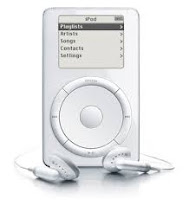 Law of Compounding: Like all positive things in our financial life, Compounding is a thing of beauty. When it comes to social media marketing requires an obscure finesse. You want interesting and unique content that is relevant to your target audience. This is the type of content that is shared across social media and may even go "Viral."
Law of Compounding: Like all positive things in our financial life, Compounding is a thing of beauty. When it comes to social media marketing requires an obscure finesse. You want interesting and unique content that is relevant to your target audience. This is the type of content that is shared across social media and may even go "Viral."Law of Influence: Discovering the influencers in your target market and partnering with them can be instrumental in growing your current business or launching a new business. A prime example of social media influencer marketing is YouTube. YouTube "gurus" are sent products for free in the hopes that they will like the item and share it on their YouTube channel to their subscribers. As of now the top YouTuber (in terms of subscribers) has 48 million. His audience is immense and they are interested in the things that interest him.
Law of Value: One sided relationships, conversations, and friendships are BORING. If you go on a date and the person only talks about their self and why you should pick them, initially you may let it slide. At some point though, if you don't feel that they add value, they aren't someone you're going to choose to keep in your life. It's the same for businesses. If all a business is post about their business and or products they won't find as much interaction as if they humanized themselves and interacted with their audience.
Law of Acknowledgement: Building relationships is key to social media marketing. Interacting with those who comment, like, or patronize your page is integral. Responding to every comment isn't necessary but scrolling through a business's social media page should include some interaction with their consumers. This goes doubly for negative consumer experiences. On site like TripAdvisor and Yelp, you will often find negative comments have a response from the company. This goes all the way back to eBay. If a customer leaves negative feedback, a seller could rebut it.
As a millenial, social media is a large part of my life. As such these "laws" are relevant to society today and likely society in the future. Learning to capitalize on free marketing is a skill every business (small and large) needs to master.


